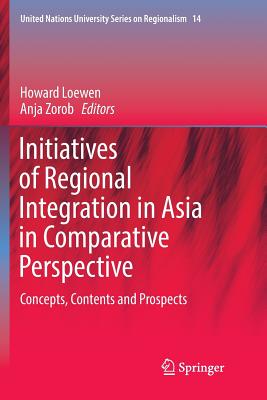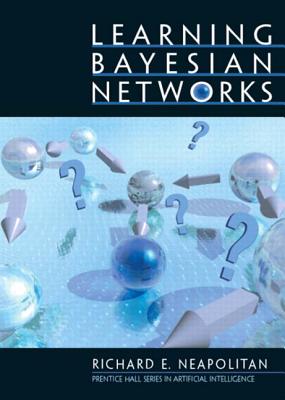The World: A Brief History : To 1500
暫譯: 世界:簡史(至1500年)
Felipe Fernandez-Armesto
- 出版商: Prentice Hall
- 出版日期: 2007-11-12
- 售價: $3,480
- 貴賓價: 9.5 折 $3,306
- 語言: 英文
- 頁數: 407
- 裝訂: Paperback
- ISBN: 0136008879
- ISBN-13: 9780136008873
已絕版
相關主題
商品描述
Description
For introductory courses in world history.
The World: A Brief History gives students the whole story.
Prentice Hall is proud to offer The World: A Brief History–the new brief version of The World: A History adapted by author Felipe Fernández-Armesto himself. The use of The World: A Brief History offers added flexibility in teaching World History, allowing instructors to supplement the text with additional readers or other material of their choice. And because the brief text was written by Fernández-Armesto himself, it continues to offer the holistic, narrative approach to history that has made the comprehensive text successful at schools across the nation.
Here’s what instructors have to say about The World:
“My students found Armesto’s style readable and entertaining. Several noted that it was unlike any history textbook they had ever seen. The color maps and photos are excellent, and the story at the beginning of each chapter helped draw the students into each period. “ — Matt Hoper, California Polytech State University
“I give The World a solid ‘A’ for its breadth of coverage, analytical framing and questions format, and its beautiful design.”
–Michael Wolfe, Penn State–Altoona
“[C]learly written and fluid prose that’s easy to understand.”
–Eben Miller, Southern Maine Community College
Fernandez-Armesto has chosen maps and pictures that stimulate debate and questions, but which also illuminate the topics at hand.”
–Chad Ross, East Carolina University
“…the seamless integration of social, cultural, political, economic, and geographic considerations allow for flexible pedagogy and the course emphasis to shift and unfold as desired by the instructor.” –Karen Kimball, University of Maine–Machias
Table of Contents
PART I: Foragers and Farmers, to 5000 B.C.E.
CHAPTER ONE: Out of the Ice: Peopling the Earth
So You Think You’re Human
Human Evolution
Out of Africa
Peopling the Old World
Migration, Population, and Social Change
The Last Great Ice Age
Ice-Age Hunters
Ice-Age Art
Ice-Age Culture and Society
Peopling the New World
Survival of the Foragers
In Perspective: After the Ice Age
CHAPTER TWO: Out of the Mud: Farming and Herding After the Ice Age
The Problem of Agriculture
A Case in Point: Aboriginal Australians
Preagricultural Settlements
The Disadvantages of Farming
Husbandry in Different Environments
Herders’ Environments
Tillers’ Environments
The Spread of Agriculture
Europe
Asia
The Americas
Africa
The Pacific Islands
So Why Did Farming Start?
Population Pressure
The Outcome of Abundance
The Power of Politics
Cult Agriculture
Climatic Instability
Agriculture by Accident
Production as an Outgrowth of Procurement
In Perspective: Seeking Stability
PART TWO: Farmers and Builders, 5000 to 500 B.C.E.
CHAPTER THREE: The Great River Valleys: Accelerating Change and Developing States
Growing Communities, Divergent Cultures
Intensified Settlement and Its Effects
The Ecology of Civilization
The Great Floodplains
The Ecology of Egypt
Shifting Rivers of the Indus Valley
Fierce Nature in Early Mesopotamia
The Good Earth of Early China
Configurations of Society
Patterns of Settlement and Labor
Politics
The Egyptian State
Statecraft in Mesopotamia
The First Documented Chinese State
Ruling the Harappan World
The Politics of Expansion
Literate Culture
In Perspective: What made the Great River Valleys Different?
CHAPTER FOUR: A Succession of Civilizations: Ambition and Instability
The Case of the Hittite Kingdom
The Importance of Trade
Hittite Society and Politics
Fragility and Fall: The End of Hatti
Instability and Collapse in the Aegean
Cretan Civilization
Mycenaean Civilization
A General Crisis in the Eastern Mediterranean?
The Egyptian Experience
The Roots of Instability
The Extinction of Harappan Civilization
The Evidence of the Rig Veda
The Environment of Stress
Conflict on the Yellow River
The Rise of Zhou
The Zhou Political System
State-Building in the Americas
Andean Examples
Developments in Mesoamerica
Assessing the Damage
The Survival of Egypt
In Perspective: Fatal Flaws
CHAPTER FIVE: Rebuilding the World: Recoveries, New Initiatives, and Their Limits
Trade and Recovery in the Middle East
The Phoenician Experience
The Assyrian Empire
The Babylonian Revival
Greece and Beyond
The Greek Environment
Greek Colonialism
Early Greek Society
The Spread of State-Building and City-Building
Empires and Recovery in China and South Asia
The Zhou Decline
South Asia: Relocated Centers of Culture
The Ganges Valley
Building Anew in Sri Lanka
The Frustrations of Isolation
Developments in North America
New Initiatives in Africa
In Perspective: The Framework of Recovery
PART III: The Axial Age, from 500 B.C.E. to 200 C.E.
CHAPTER SIX: The Great Schools
The Thinkers of the Axial Age
The Thoughts of the Axial Age
Religious Thinking
New Political Thinking
Challenging Illusion
Math
Reason
Science
Medicine
Skepticism
Axial Age-Axial Area: The Structures of the Axial Age
In Perspective: The Reach of the Sages
CHAPTER SEVEN: The Great Empires
Routes That Drew the World Together
The Sea Routes of the Indian Ocean
Land Routes: The Silk Roads
The First Eurasian Empire: Persia
The Persian Heartland
Persian Government
The Persian–Greek Wars
The Empire of Alexander the Great
The Rise of Rome
The Roman Frontiers
Imperial Culture and Commerce
The Celts
The Beginnings of Imperialism in India
Government
Asoka and His Mental World
Chinese Unity and Imperialism
Unity Endangered and Saved
The Menace from the Steppes
Beyond the Empires
Japan and Korea
The Western Eurasian Steppe
Mesoamerica
In Perspective: The Aftermath of the Axial Age
PART IV: Fitful Transitions, from about the Third Century to the Tenth Century
CHAPTER EIGHT: Postimperial Worlds: Problems of Empires in Eurasia and Africa, ca. 200 c.e. to ca. 700 c.e.
The Western Roman Empire and Its Invaders
Changes within the Roman Empire
The “Barbarian” West
Steppelanders and Their Victims
China
India
New Frontiers in Asia
Korea
Funan
The Rise of Ethiopia
The Crises of the Sixth and Seventh Centuries
Justinian and the Eastern Roman Empire
The New Barbarians
The Arabs
Islam
Arabs against Persia and Rome
The Muslim World
Recovery and Its Limits in China
Rise of the Tang
Empress Wu
Tang Decline
In The Shadow of the Tang: Tibet and Japan
Tibet
Japan
In Perspective: The Triumph Of Barbarism?
CHAPTER NINE: The Rise of World Religions: Christianity, Islam, and Buddhism
Commerce and Conflict: Carriers of Creeds
In the Islamic World
In Christendom
In the Buddhist World
Trade
Manichaeanism and the Uighurs
Christianity on the Silk Roads
Islam on Trade Routes
Monarchs and Missionaries
Constantine
Ezana
Trdat
Diplomatic Conversions
Buddhist Politics
Korea
Japan
Tibet
India
The Margins of Christendom
Vladimir and the Rus
Islam and the Turks
Trickle Down: Christianization and Islamization
Religious Lives: The World of Monks and Nuns
Christian Monasticism
Buddhist Monks
Sufism
Religious Women
In Perspective: The Triumphs of the Potential World Religions
CHAPTER TEN: Remaking the World: Innovation and Renewal on Environmental Frontiers in the Late First Millennium
Isolation and Initiative: Sub-Saharan Africa and the Americas
African Geography
American Geography
The Maize Frontiers
The Islamic World and the Environment
Frontier Growth in Japan
China and South Asia
The Pacific
The Expansion of Christendom
In Perspective: The Limits of Divergence
PART V: Contacts and Conflicts, 1000 C.E. to 1200 C.E.
CHAPTER ELEVEN: Contending with Isolation: ca. 1000–1200
American Developments: From the Arctic to Mesoamerica
Greenland and the North
The North American Southwest and the Mississippi Region
Mesoamerica
Around The Indian Ocean: Ethiopia, the Khmer, and India
East Africa: The Ethiopian Empire
Southeast Asia: The Khmer Kingdom
India: Economy and Culture
India: The Chola Kingdom
Eurasian Extremities: Japan and Western Europe
Japan
Western Europe: Economics and Politics
Western Europe: Religion and Culture
In Perspective: The Patchwork of Effects
CHAPTER TWELEVE: The Nomadic Frontiers: the Islamic World, Byzantium, and China ca. 1000–1200
The Islamic World and Its Neighbors
The Coming of the Steppelanders
The Crusades
The Invaders from the Sahara
The Progress of Sufism
The Byzantine Empire and Its Neighbors
Byzantium and the Barbarians
Basil II
The Era of Difficulties
Byzantium and the Crusaders
Byzantine Art and Learning
China and the Northern Barbarians
The End of the Tang Dynasty
The Rise of the Song and the Barbarian Conquests
Economy and Society under the Song
Song Art and Learning
In Perspective: Cains and Abels
PART VI: The Crucible: The Eurasian Crises of the Thirteenth and Fourteenth Centuries
CHAPTER THIRTEEN: The World the Mongols Made
The Mongols: Reshaping Eurasia
The Mongol Steppe
The Mongol World beyond the Steppes: The Silk Roads, China, Persia and Russia
China
Persia
Russia
The Limits of Conquest: Mamluk Egypt and Muslim India
Muslim India: The Dehli Sultanate
EUROPE
IN PERSPECTIVE: The Uniqueness of the Mongols
CHAPTER FOURTEEN: The Revenge of Nature: Plague, Cold, and the Limits of Disaster in the Fourteenth Century
Climate Change
The Coming of the Age of Plague
The Course and Impact of Plague
Moral and Social Effects
The Limits of Disaster: Beyond the Plague Zone
India
Southeast Asia
Japan
Mali
The Pacific: Societies of Isolation
In Perspective: The Aftershock
CHAPTER FIFTEEN: Expanding Worlds: Recovery in the Late Fourteenth and Fifteenth Centuries
Fragile Empires in Africa
East Africa
West Africa
Ecological Imperialism in the Americas
The Inca Empire
The Aztec Empire
New Eurasian Empires
The Russian Empire
The Ottoman Empire
The Limitations of Chinese Imperialism
The Beginnings of Oceanic Imperialism
The European Outlook: Problems and Promise
In Perspective: Beyond Empires
商品描述(中文翻譯)
描述
適用於世界歷史的入門課程。
《世界:簡史》為學生提供了完整的故事。
Prentice Hall 自豪地推出《世界:簡史》——這是由作者 Felipe Fernández-Armesto 本人改編的新簡版《世界:歷史》。使用《世界:簡史》提供了更大的靈活性來教授世界歷史,讓教師可以根據自己的選擇補充額外的讀物或其他材料。由於這本簡版文本是由 Fernández-Armesto 本人撰寫,因此它繼續提供一種整體的敘事歷史方法,這使得全面的文本在全國各地的學校中取得了成功。
以下是教師對《世界》的評價:
“我的學生發現 Armesto 的風格易讀且有趣。幾位學生指出,這本書與他們見過的任何歷史教科書都不同。色彩豐富的地圖和照片非常出色,每章開頭的故事幫助學生進入每個時期。” — Matt Hoper,加州理工州立大學
“我給《世界》一個堅實的‘A’,因為它的涵蓋範圍、分析框架和問題格式,以及其美麗的設計。” — Michael Wolfe,賓州州立大學–阿爾圖納
“[C]清晰易懂且流暢的散文。” — Eben Miller,南緬因社區學院
“Fernandez-Armesto 選擇的地圖和圖片激發了辯論和問題,但也照亮了當前的主題。” — Chad Ross,東卡羅來納大學
“…社會、文化、政治、經濟和地理考量的無縫整合使得教學法靈活,課程重點可以根據教師的需求進行調整和展開。” — Karen Kimball,緬因大學–馬基亞斯
目錄
第一部分:採集者和農民,公元前 5000 年之前
第一章:走出冰雪:人類的出現
你以為你是人類嗎
人類進化
走出非洲
人類的老世界
遷徙、人口與社會變遷
最後的冰河時期
冰河時期的獵人
冰河時期的藝術
冰河時期的文化與社會
人類的新世界
採集者的生存
從冰河時期的視角
第二章:走出泥土:冰河時期後的農業與牧羊
農業的問題
一個例子:澳洲原住民
前農業定居點
農業的缺點
不同環境中的飼養
牧羊者的環境
耕作的環境
農業的擴展
歐洲
亞洲
美洲
非洲
太平洋島嶼
那麼,為什麼農業會開始?
人口壓力
豐富的結果
政治的力量
崇拜農業
氣候不穩定
意外的農業
生產作為採購的延伸
從穩定的視角看
第二部分:農民和建設者,公元前 5000 年至公元前 500 年
第三章:大河谷:加速變化與發展的國家
成長的社區,分歧的文化
加強定居及其影響
文明的生態
大洪泛區
埃及的生態
印度河谷的變遷
早期美索不達米亞的激烈自然
早期中國的良好土地
社會的配置
定居與勞動的模式
政治
埃及國家
美索不達米亞的治國之道
第一個有記錄的中國國家
統治哈拉帕世界
擴張的政治
識字文化
從視角看:大河谷的不同之處?
第四章:文明的接續:野心與不穩定
赫梯王國的案例
貿易的重要性
赫梯社會與政治
脆弱與衰落:哈提的結束
愛琴海的不穩定與崩潰
克里特文明
邁錫尼文明
東地中海的普遍危機?
埃及的經歷
不穩定的根源
哈拉帕文明的滅絕
《梨俱吠陀》的證據
壓力的環境
黃河的衝突
周的崛起
周的政治體系
美洲的國家建設
安第斯的例子
中美洲的發展
評估損失
埃及的生存
從視角看:致命的缺陷
第五章:重建世界:恢復、新倡議及其限制
中東的貿易與恢復
腓尼基的經歷
亞述帝國
巴比倫的復興
希臘及其以外
希臘的環境
希臘的殖民主義
早期希臘社會
國家建設與城市建設的擴展
中國與南亞的帝國與恢復
周的衰退
南亞:文化中心的重新定位
恆河流域
在斯里蘭卡重新建設
孤立的挫折
北美的發展
非洲的新倡議
從視角看:恢復的框架
第三部分:軸心時代,公元前 500 年至公元 200 年
第六章:偉大的學校
軸心時代的思想家
軸心時代的思想
宗教思考
新的政治思考
挑戰幻覺
數學
理性
科學
醫學
懷疑主義
軸心時代-軸心區:軸心時代的結構
從視角看:聖人的影響
第七章:偉大的帝國
將世界聯繫在一起的路徑
印度洋的海上路線
陸路:絲綢之路
第一個歐亞帝國:波斯
波斯的心臟地帶
波斯政府
波斯-希臘戰爭
亞歷山大大帝的帝國
羅馬的崛起
羅馬的邊界
帝國文化與商業
凱爾特人
印度帝國主義的開始
政府
阿育王及其心靈世界
中國的統一與帝國主義
統一的危機與拯救
來自草原的威脅
超越帝國
日本與韓國
西歐亞草原
中美洲
從視角看:軸心時代的後果
第四部分:斷斷續續的過渡,約公元三世紀至十世紀


















